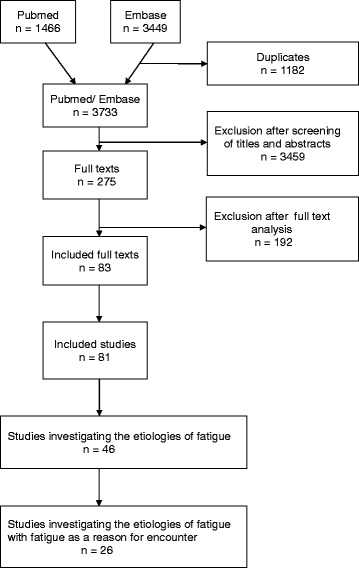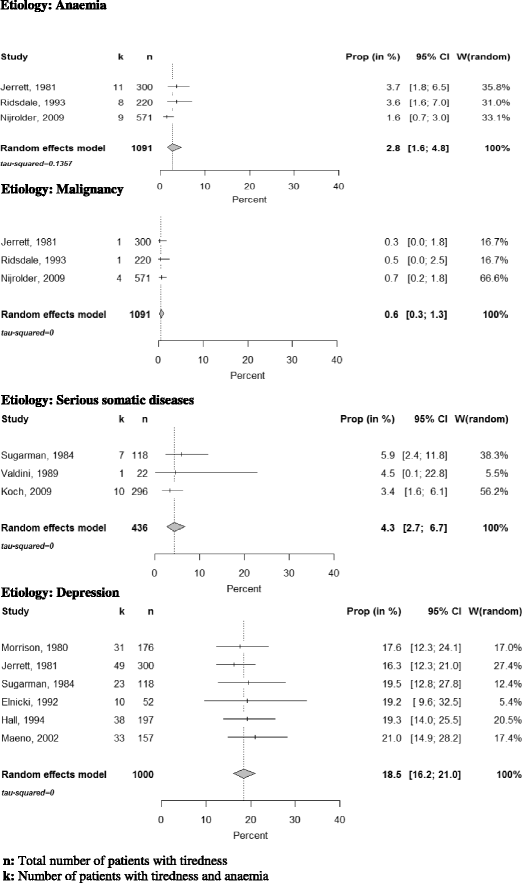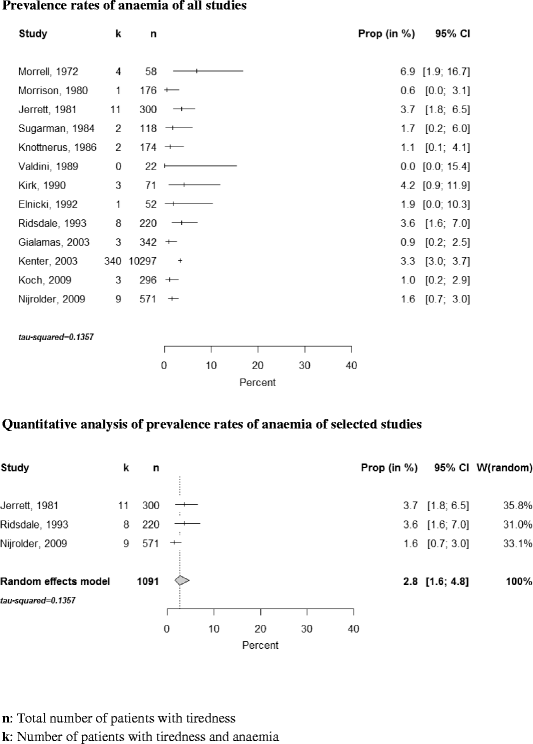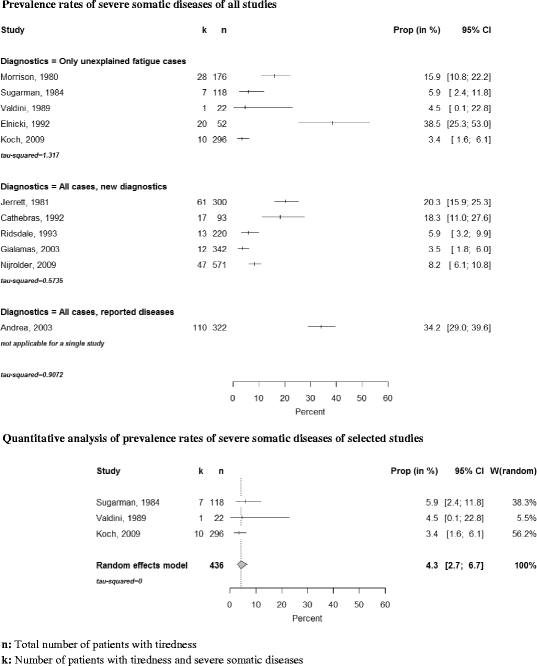The differential diagnosis of tiredness: a systematic review
- PMID: 27765009
- PMCID: PMC5072300
- DOI: 10.1186/s12875-016-0545-5
The differential diagnosis of tiredness: a systematic review
Abstract
Background: Tiredness is one of the most frequent complaints in primary care. Although often self-limiting and frequently associated with psychosocial stress, patients but also their physicians are often uncertain regarding a serious cause and appropriate diagnostic work-up. We conducted a systematic review and meta-analysis of studies reporting on differential diagnosis of fatigue in primary care.
Methods: MEDLINE, EMBASE and conference abstracts were searched for primary care based studies of patients presenting with tiredness. Twenty-six studies were included. We report on anaemia, malignancy, serious organic disease, depression and the chronic fatigue syndrome (CFS) as causes of tiredness as presenting complaint.
Results: We found considerable heterogeneity of estimates which was reduced by limiting our analysis to high quality studies. Prevalences were as follows-anaemia: 2.8 % (CI (confidence interval) 1.6-4.8 %); malignancy: 0.6 % (CI 0.3-1.3 %); serious somatic disease: 4.3 % (CI 2.7-6.7 %); depression 18.5 % (CI 16.2-21.0 %). Pooling was not appropriate for CFS. In studies with control groups of patients without the symptom of tiredness, prevalence of somatic disease was identical to those complaining of tiredness. Depression, however, was more frequent among those with tiredness.
Conclusions: Serious somatic disease is rare in patients complaining of tiredness. Since prevalence is similar in patients without tiredness, the association may not be causal. Extensive investigations are only warranted in case of specific findings from the history or clinical examination. Instead, attention should focus on depression and psychosocial problems.
Keywords: Fatigue; Meta-analysis; Primary care; Tiredness.
Figures





References
Publication types
MeSH terms
LinkOut - more resources
Full Text Sources
Other Literature Sources
Medical

